Shipyard Employment eTool
Hot Work (including Welding, Cutting and Heating) >> Preparing Space for Hot Work
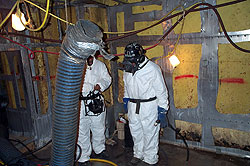
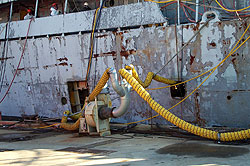
Before performing hot work, shipyard personnel must prepare spaces for entry and work. Consideration must be given to such items as illumination, ventilation, means of access (such as ladders), and staging. When the space has been adequately prepared, a marine chemist or shipyard competent person must conduct a visual inspection. [See Testing and Certification for Hot Work and Confined or Enclosed Spaces and Other Dangerous Atmospheres.]
The tasks and inspections below can be conducted by shipyard personnel (such as tank cleaners, ship superintendent, port engineer, Shipyard Competent Person (SCP), Marine Chemist, etc). Either a Shipyard Competent Person (SCP) or a Marine Chemist must test for hot work, depending on the hot work location.
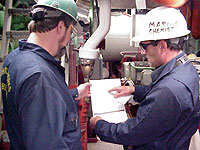


In preparation of a space for hot work, the requirement in 29 CFR 1915 Subpart D must be followed. If a Marine Chemist Certificate is required, the following must be provided [NFPA 306, Chapter 2]:
- Determine the nature and the extent of the hot work. [NFPA 306, 2-2.2(b)]
- Determine the nature of other operations in or adjacent to the space that may affecting hot work (such as cleaning). [NFPA 306, 2-2.2(b)]
- Determine the cargo history, the last three cargos held in work space and adjacent spaces. [NFPA 306, 2-2.2(a)]
- Secure pipelines and other equipment (heating coils, pumps, etc.) in the work space to prevent flammable or toxic materials from being discharged into the space. [NFPA 306, 2-2.2(e)]
- Make space "Safe for Workers," including installing appropriate illumination, access, staging, and so forth. [29 CFR 1915.71, 29 CFR 1915.72, 29 CFR 1915.73, 29 CFR 1915.74, 29 CFR 1915.77, 29 CFR 1915.81, 29 CFR 1915.82]
- Post warning signs as appropriate. [29 CFR 1915.14(b)(2), 29 CFR 1915.16(b)][NFPA 306, 2-3]
- Install appropriate hot work ventilation. [29 CFR 1915.51]
- Before use, ensure that welding and burning equipment is properly grounded, inspected, and installed. [29 CFR 1915.55 and 29 CFR 1915.56]
- Ensure that adequate fire protection is available. [29 CFR 1915 Subpart P].

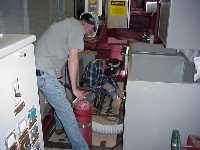
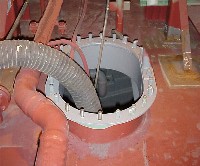
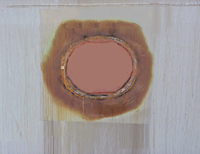

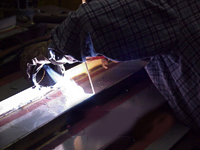

Preparation for hot work also includes:
- Ensuring that flammable, combustible, or toxic coatings (preservative coatings or insulation) have been removed from hot work surfaces.
- A shipyard competent person must perform testing on any surface of which the flammability is not known. [29 CFR 1915.53(b)]
- Toxic preservative coatings must be stripped back at least 4 inches, otherwise airline respirators must be used. [29 CFR 1915.53(d)(1)]
- Ensuring that flammable and combustible materials (such as trash, rags, open containers of solvents, etc.) have been removed from the area. [29 CFR 1915.81 and 29 CFR 1915 Subpart P]
- Ensuring that flammable or combustible materials have been removed or are adequately covered. [29 CFR 1915 Subpart P]
- Ensuring that all movable fire hazards in the vicinity have been removed from the hot work area. [29 CFR 1915 Subpart P]
- Ensuring ventilation is adequate to maintain a safe atmosphere during hot work. [29 CFR 1915.51(b)]
- Ensuring that adjacent spaces have been inspected and meet requirements for hot work.
- In lieu of cleaning, adjacent spaces can be inerted.
- "Inert" or "inerted atmosphere" means an atmospheric condition in which the oxygen has been reduced or removed in order to prevent a fire or explosion. [29 CFR 1915.11(b) and NFPA 306]
- In lieu of cleaning, adjacent spaces can be inerted.
Additional Resources
- See also, NFPA Fire Protection Handbook for "Hot Work Oxygen Chart" (Inerting).

